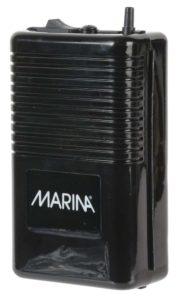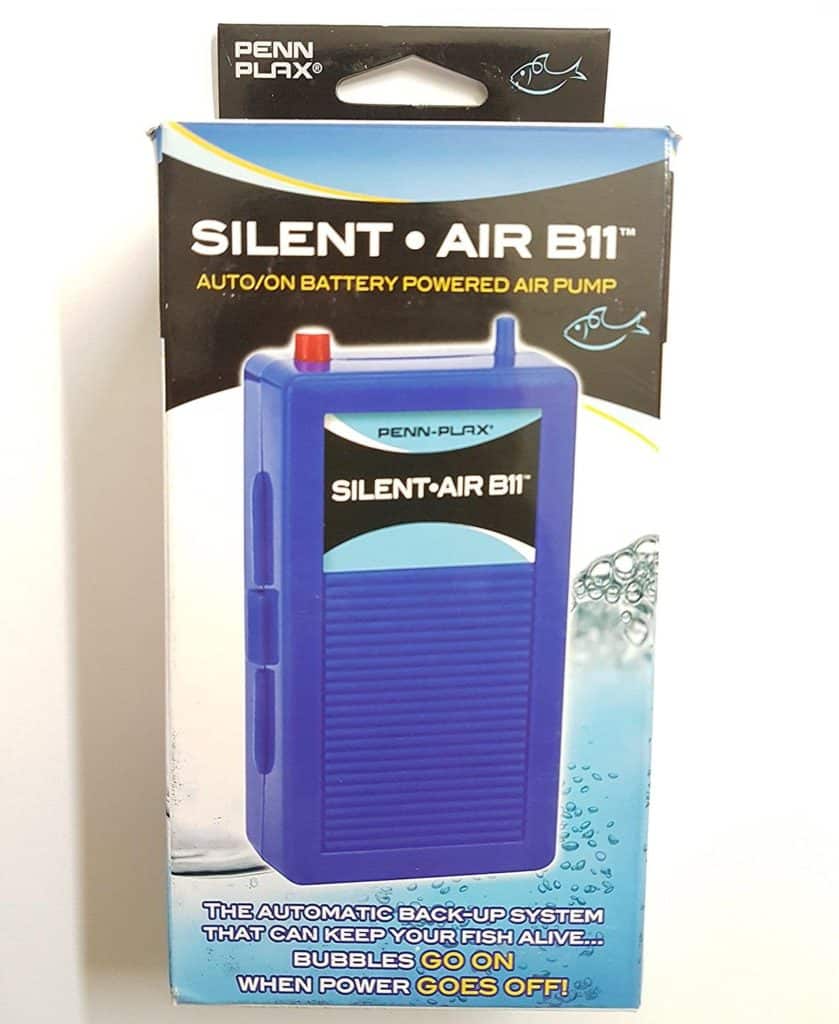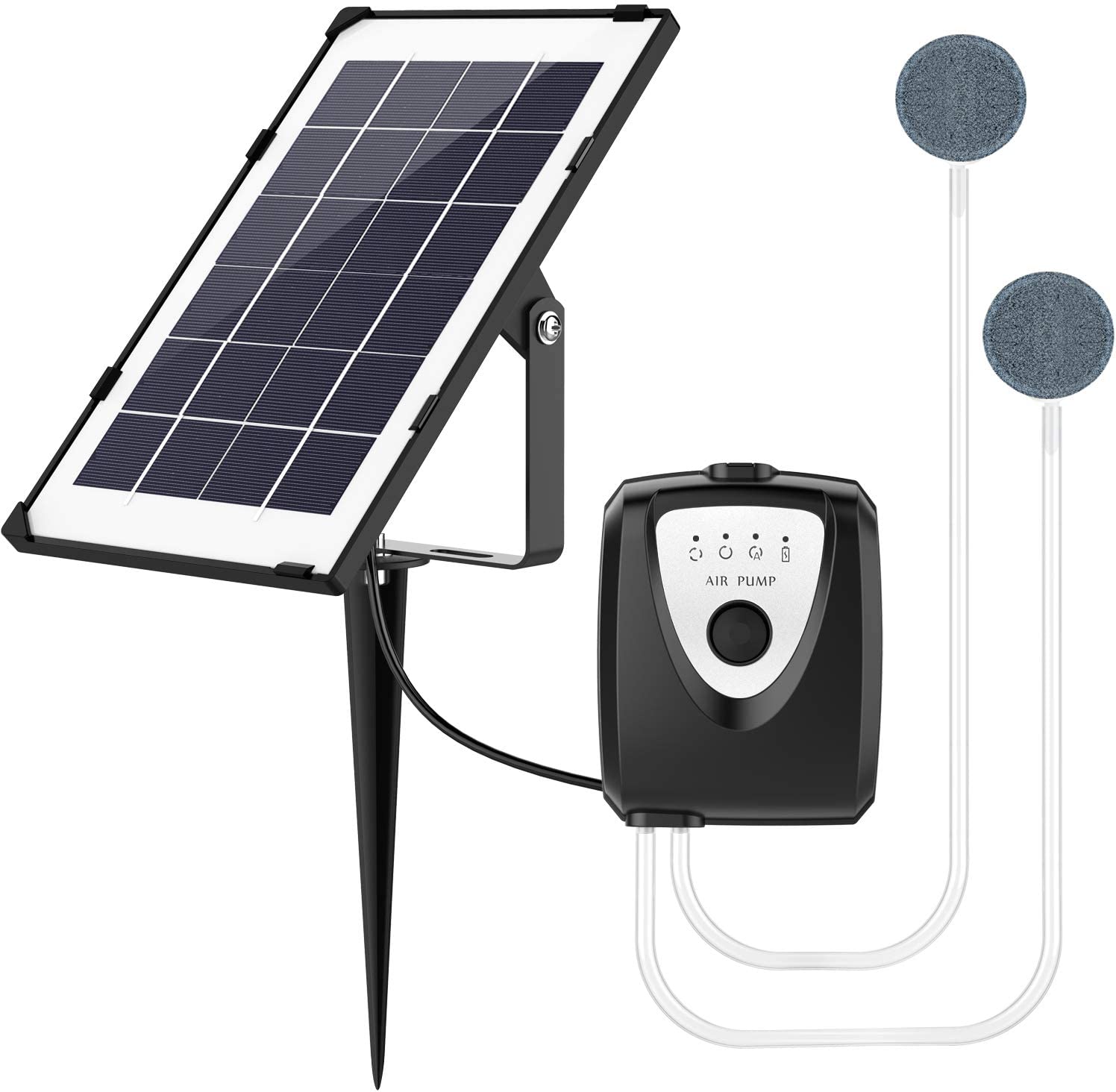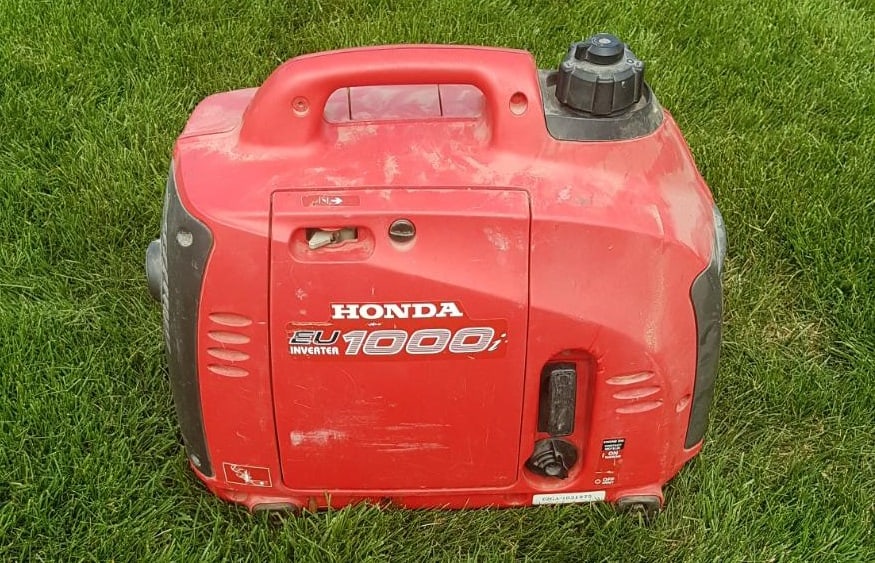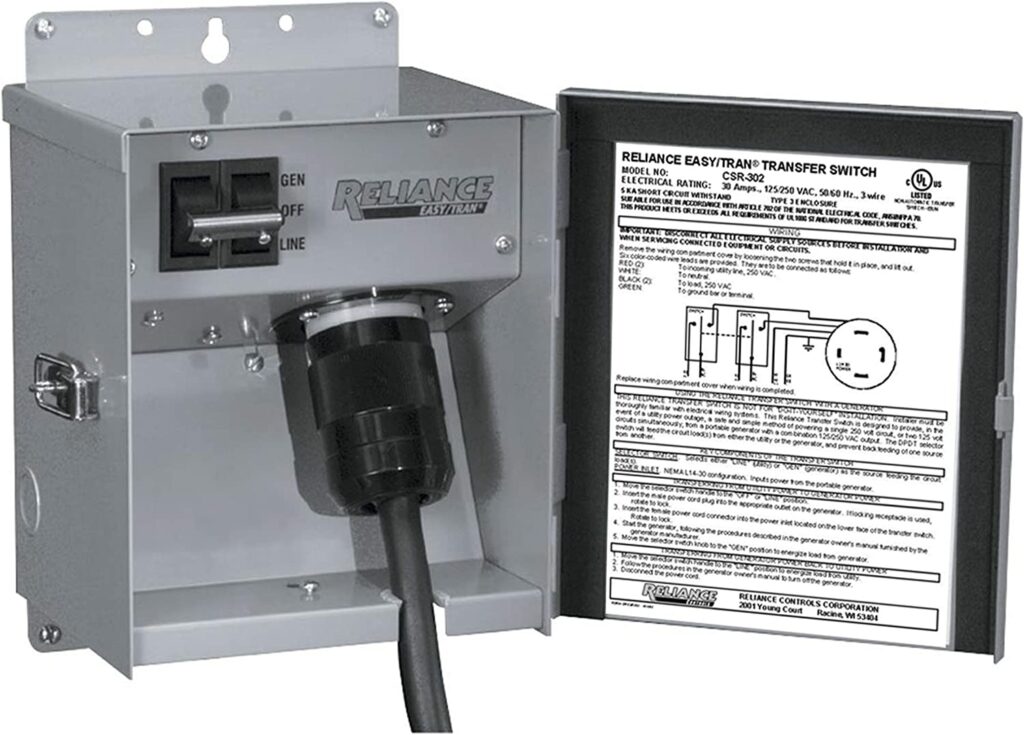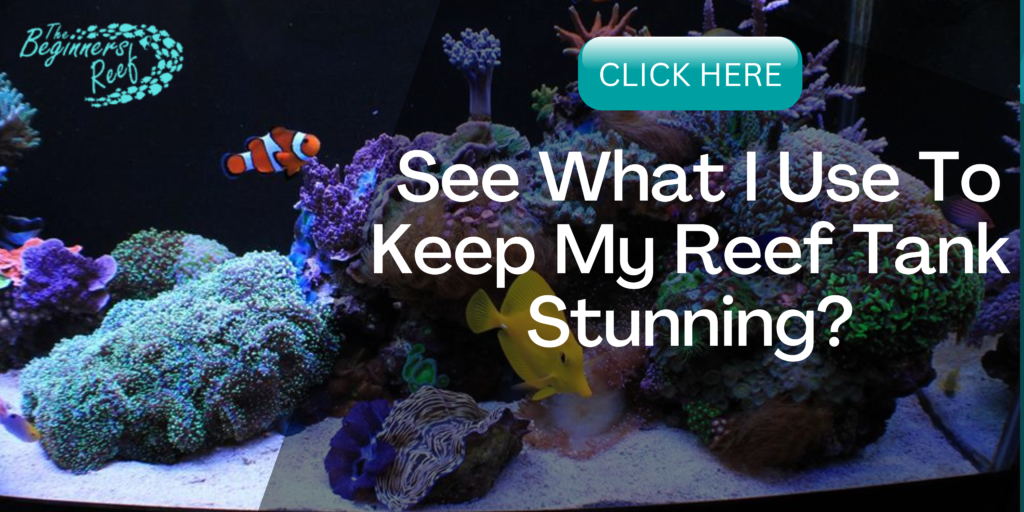To a fish keeper, the loss of electrical power is a very stressful time. Hopefully you are home when it happens, or even have had some time to prepare, but no matter what, losing power to any aquarium is going to stress both you and your aquariums inhabitants.
When electrical power is lost to an aquarium oxygen in the water will begin to fall, ammonia will begin to rise and the water temperature will change. To reduce these changes you can install air pumps, battery backup systems, portable generators and car battery-fed inverters to supply temporary power.
Having recently experienced a long power outage when my neighbors house caught fire it made me realize just how vulnerable our aquairums are so I took steps to ensure I was ready for the next outage and these are the ways that I found during my research.
If you own a small aquarium, maintinaing water temperature will be your first priority. If you own a large aquarium, maintaining oxygen levels will be your first priority. Keeping the oxygen level high, preventing the water temperarure changing too much and preventing ammonia building up are the steps we need to take to ensure the aquairum is kept alive.
When the power goes out here are some solutions to keeping an aquarium alive:
- Free Solutions
- Cheap & DIY Solutions
- Expensive Solutions
1. Free Solutions:
In a pinch the first thing we can do, or have someone do while you get other options installed is to tend to the aquarium manually.
Manually Stirring the Water
Using a large plastic serving spoon and manually stirring the aquarium water will ensure good gas exchange at the surface of the water and will keep the water oxygenated. It also helps to keep the temperature mixed throughout all levels in the aquarium and provide water movement if you have corals.
You will get tired and your tank will need stirring a few times each hour!
Manually Jugging the Water
Similar to stirring, but this involves using a measuring jug or cup and scooping up aquarium water and then pouring it back into the tank. This has the same benefits as stirring but will also allow your water to cool. This could be a benefit if you are trying to reduce the temperature of your tank if your home relies on air conditioning or your aquarium uses a chiller in a hot climate like Florida or Pheonix.
2. Cheap & DIY Solutions:
A small bit of automation or battery power can really extend the life of your aquarium during a power outage. Some systems can be easily installed permanently so they automatically kick-in the second your home loses electrical power:
Battery Powered Air Pumps
Air pumps allow the oxygen consumed by the livestock within your aquarium to be replenished. They also help create water movement within the tank.
Manually Activated Air Pumps
This is a simple battery-powered air pump that you can turn on and drop the airstone into the water.
This one requires you to install and operate but is a lifesaver for around $10. It will supply air for a 30 gallon tank for up to 40 hours. Use mulitple pump for larger aquariums.
Requires 2x D size batteries.
Find the pump HERE at Amazon.com
Find D size Batteries Here at Amazon.com
Automatic Activating Air Pumps
This battery-operated air pump also plugs into the wall to monitor the homes’ electricity supply. When the power goes out this pump automatically starts and pumps air into your aquarium until the batteries go flat. (Plugging in does not charge the batteries – For power monitoring only!)
Be sure to have replacement batteries on hand to keep these pumps running!
These pumps are also very useful for transporting fish long distances!
A nice little set-and-forget unit for around $25. Also uses 2x D Cell batteries.
Find it out Here at Amazon.com
Find D size Batteries Here at Amazon.com
Solar Powered Air Pumps
Another great option to providing emergency oxygen and water movement to your aquarium in a power outage. The 10ft cord to the solar panel allows you to place the panel in a nearby window and drop the airstones into the tank.
Its selectable low-power setting will automatically cycle the air pump on and off to help the internal battery last even longer.
You can find it Here at Amazon.com
Installed Battery Back-Up Systems
I have an entire article dedicated to building your own or purchasing one of the manufactured units designed to automatically keep air pumps, powerheads, lights and even heaters working on your aquairum during a power outage. If this is something that interests you then please check out this guide:
Aquarium Battery Backups -This Guide Could Save You $$$!
3. Expensive Solutions
For those of you like myself that have thousands of dollars and years of time invested in our aqauriums a total loss due to a power outage is unthinkable. Depending on the depth of your pockets, here are a few other options to think about:
Portable Generators
There are some awesome generators out there to run your tank and having one that is fuel-efficient, quiet and easily maintained is a must. An inverter generator supplies clean electrical power to your devices. With aquarium pumps and powerheads now having sophisticated electronics to control them a noisy, dirty electrical supply is a surefire way to damage them. The inverter generators prevent this.
There are two types of generators that I really recommend:
Gasoline Inverter Generators at Amazon.com – come in a range of sizes to meet your wattage demands and are inverter generators which in my opinion is needed with today’s digital electronics and controls. Some pumps can run backward when non-inverter generators are used!
Dual Fuel Inverter Generators at Amazon.com -These dual fuel generators can run on gasoline or propane and are my personal pick. Propane does not go bad like gasoline and having a 50/100lb tank sitting ready to go is great to have. Just like above, these are inverter generators that keep everything running good.
Here is my trusty steed, a Honda 1000i inverter generator and it has served me well! I’m getting the point where I need more wattage so ill definitely be looking to set up a dual fuel inverter generator with a 100lb propane tank and a transfer switch to ensure my aquarium is fully protected even when I’m not home.
Portable Generator Automatic Transfer Switch
If you are planning a home reno or building a dedicated space for a large aquarium these great little devices allow you to have your aquarium circuits wired to this little device.
You can plug the generator directly into it and providing your generator is of a big enough wattage, your entire aquarium system will be back up and running.
You will need a qualified electrician to do the work, but it’s a great way to ensure your entire aquarium system gets power.
Find them Here at Amazon.com
Whole House Generator
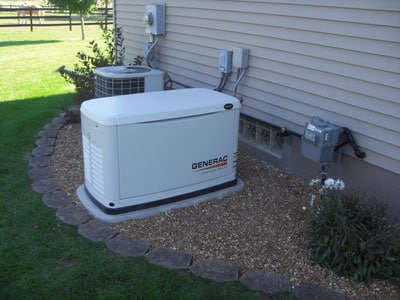
These are by far the most expensive solution but are definitely worth thinking about if you can afford it. They are permanently installed on your property, run off propane or natural gas and automatically detect a power outage and fire up to power your entire house.
They are a great option for peace of mind and you don’t have to be home to drag out the generator and fire it up to protect your aquarium.
These are going to cost anywhere from $8K to $20K depending on where you live and the size of the generator you require. Contact a local electrical contractor to find out more about them.
How Long Can An Aquarium Survive Without Power?
For small aquariums death can begin with 2-3 hours of losing power. Water temperature rapidly changes causing stress and fatalities. Larger aquariums that are well maintained and have good water quality have been known to have no issues until 6-12 hours after the outage without the owners assistance.
So this is the ‘How long is a piece of string?’ analogy because there are so many factors affecting every aquarium – Water quality, ambient room conditions, draughts, stocking levels, fish compatibility etc.
The following factors influence how soon you could start losing fish:
- Do you have a small aquarium? Small lose temperature faster
- Is your aquarium heavily stocked? More oxygen consumed, more ammonia produced
- Extreme cold winter, house room temperature cools rapidly
- Extreme hot summer, house room temperature warms rapidly
- Has it been a long time since the last water change? Are nitrates already high?
- Did you heavily feed the tank just before the power outage?
- Is the majority of your Live Rock stored in the sump? Pump does not circulate to sump anymore
- Was there any fish illness in effect before losing power?
- Were there any medications in use before losing power? Did you dose medication that reduces oxygen?
All of these factors will dictate how long your aquarium lasts without assistance before you begin to see signs of fish distress.
How Long Can A Coral Aquarium Last Without Power?
Coral is far more susceptible to a power outage due to their intolerance for water parameter changes. In small tanks with rapid temperature swings sensitive corals like SPS can begin to die within 1-2 hours. Soft corals are more hardy and may last several hours without heat and flow.
Corals will be affected by the conditions mentioned above as well as the reducing oxygen, increasing ammonia and the change in temperature but there are a couple of things you can do to help fend off the Grim Reaper:
- Natural light from windows can help coral photosynthesize. Use of a large mirror to reflect light into the tank can help
- If you only have a small generator or inverter hooked up to your car to power one or two devices at a time, rotate which devices run for 1 hour at a time. Lights, then heater, then wavemakers etc. Keep the cycle going so the corals get a bit of each device each day.
What Happens to My Aquarium During a Power Outage?
During a power outage your aquairum will begin to lose oxygen in the water, ammonia will begin to rise and the water temperature will change depending on your climate. Each one of these needs to be addressed if the aquairum is without power for more than 1-2 hours.
The three main aquarium considerations during a power outage are:
- Oxygen Depletion
- Ammonia Build-up
- Water Temperature
Oxygen Depletion
There are 4 main consumers of oxygen in your aquarium and they never stop sucking this stuff up! Fish, plant life (algae and plankton), aerobic bacteria & micro-fauna (Copepods, Amphipods, and Rotifers).
During normal, powered operation your water is being constantly replenished with fresh oxygen by the surface agitation of your aquarium water, and if applicable, water draining down into a sump and the protein skimmer to name a few.
As water is moved it also releases the tiny amounts of nitrogen that is being produced as part of the constant ongoing Nitrogen Cycle within the aquarium.
If you want to find out more on the Nitrogen Cycle please check out this article:
Fish Tank Nitrogen Cycle – Step-By-Step Explanation
When your water stops moving due to the power outage, this renewal of oxygen is not taking place, but your aquarium inhabitants are still consuming. The first signs of this you will notice will be your fish gasping at the surface.
The longer the power outage continues, the more xygen is consumed then the less oxygen will be available to keep the inhabitants alive. Oxygen depletion happens the fastest in most aquariums and should be the first item you need to address, unless you have a nano aquarium.
If you have a small nano-tank, temperature drop could be more of your first concern due to small water volumes losing their temperature quicker than larger volumes.
If you have never heard of a Nano-Tank be sure to read this:
What Is A Nano Reef Aquarium?
Ammonia
Just like us humans, the living organisms are constantly going to the bathroom in the aquarium. Their excretions contain ammonia, or as their poop breaks down, will release ammonia.
The beneficial bacteria within the aquarium and filtration systems are normally doing their job to remove or convert the excretions and ammonia. Once the power stops, the water is no longer being passed through the filtration media and your beneficial bacteria begin to die due to lack of oxygen.
The more bacteria that die, the less ammonia is being processed which then accumulates in the water and eventually poisons your tanks’ inhabitants.
Temperature
I briefly mentioned in the oxygen section that small tanks lose heat quicker than large tanks. This all comes down to thermodynamics.
Heat is a form of energy and how quickly your aquarium expels this energy to the surrounding air is called Heat Transfer.

Because water volume is cubed (in³, cm³) the amount of water that can store heat energy increases by a factor of 3 for each additional gallon.
Therefore the more water in your aquarium, the more heat energy your aquarium can store.
Small Water Volumes Contain a Low Amount of Heat Energy
Large Water Volumes Contain a High Amount of Heat Energy
As your tank temperature cools, your tanks inhabitants begin to slow down, cool and eventually die. Depending on how big your tank is, depends on how soon this will happen.
Having a battery-powered digital thermometer like THIS ONE at Amazon.com is great for monitoring your water temp, especially when you have your aquarium wrapped in blankets.
If you have corals, especially SPS your temperature drop will need to be far less to prevent them from dying, whereas most fish can withstand a larger temperature drop.
Anything below 76°F or 24°C you may start to see coral death
Anything below 70°F or 21°C you may start to see fish death
How Can I Keep My Aquarium Warm/Cool During a Power Outage?
Temperature is fairly easy to maintain but it requires constant attention and if you are away or are unable to ‘Baby-Sit’ your aquarium then it may be more difficult.
Maintaining water temperature in an aquarium during a power outage can be acheived by using a heater or chiller powered by a generator, wrappng the aquarium in survival blankets, insert sealed bottles filled with warm/cold water into the tank water or floating sealed heat or cool packs into the water.
If you do not have access to any of the generators or battery-powered systems mentioned above here are some simple steps you can take:
How To Prevent Your Aquarium From Heating Up
This applies mainly to aquariums located in hot climates where summer temperatures get really hot. Many people will use the home air conditioner to help maintain temperature, but with no power = no AC!
Here are some ways to prevent your aquarium water from warming:
- Ice placed in a clean Ziploc bags and floated in the aquarium
- Wet towels wrapped around the aquarium
- Opening windows in the home if there is a good breeze
- Closing the curtains to keep out direct sunlight
How To Prevent Your Aquarium From Cooling Down
I live in a climate where our winters can drop to -40°F and this is the time that mother nature can wreak havoc with the power companies.
Here are some tips to help prevent your aquarium from cooling too much:
- Wrap your aquarium completely in Survival Blankets, duvets or whatever you can find. Leave a small opening at the top for gas exchange
- Warm water on a propane stove or BBQ to fill bottles and float in the aquarium
- Keep the aquairum canopy closed as much as possible and resist repeated opening if you can
- Light the wood-burning fireplace in the home if one is available
- Keep the door closed to the room containing the aquarium
Will Aquarium Filter Bacteria Die During A Power Outage?
Beneficial bacteria in an aquarium will being to die within 1-2 hours of no electrical power. As oxygen reduces the bacteria die and depending on the cleanliness of the tank before the outage the bacteria could rapidly perish if the tank was dirty and due for maintenance.
How fast they die will depend on how many of your water parameters you can keep in the optimum range during the power outage. To view those optimum ranges check out my Parameters Guide.
As your bacteria begin to die the quicker your other parameters will begin to decline as mentioned in the ammonia section. The most important parameter to maintain for keeping your bacteria alive is oxygen. Once this depletes, your bacteria will begin to die at a rapid rate.
Do You Feed Fish During A Power Outage?
Feeding fish during a power outage is not recommended. Bacteria to process fish waste will be declining and fish will begin to stop feeding with the drop in oxygen and temperature leading to uneaten food breaking down and increasing the bio-load on the decreasing beneficial bacteria population.
Fewer bacteria means less processing, which means more toxic ammonia is allowed to go unprocessed causing it to rise, in addition, the more your bacteria, fish and clean-up-crew work, the harder their metabolism works, which means they consume more oxygen. Can you see a pattern forming here?
As the temperature begins to fall your fish will eat less anyway. They are able to survive for a week without food, so don’t worry about them going hungry!
How Can I Oxygenate My Fish Tank Without Electricity?
The easiest way to oxygenate an aquaiurm during a power outage is to manually stir the water and use battery-powered air pumps with an airstone in the water. Moving the water around with a spoon or air pump will help to exchange gases and circulate oxygen rich water throughout the aquarium.
Using any of the air pumps mentioned above will be the best cause of action unless you have a battery backup system installed on your powerheads. Provinding the water surface is moving, gas exchange will occur allowing nitrogen and carbon dioxide to be released and oxygen to be absorbed.
How Can You Prepare Aquarium for a Power Outage?
A power outage is never a good thing but being prepared is the best thing you can do to save your aquarium. Sudden power outages usually cause the most stress as people are often not ready for them.
Sudden Power Outages
Here are a few tips you can to do prepare an aquarium for a sudden power outage:
- Have your wavemakers and powerheads on battery backups so it’s not a big deal if you are at work or sleeping when the outage occurs
- Have a battery-powered air pump installed or ready to install. Remove the batteries from the pump when not in use. Batteries leak! Have spare batteries
- Purchase a solar-powered air pump like the one mentioned earlier and have it always charging in the sun
- Have a space blanket or two and some string or bungees in the stand to quickly wrap your tank
- Have a couple of empty and sterilized 2L pop bottles ready to be filled with warm/cold water
- Ensure your BBQ propane tank is always full so you can boil warm water if you live in a cold climate
- Keep your ice maker drawer full/buy ice bags if you live in a hot climate
- Try and keep two storage bins of new salt mix and RO/DI water on hand at all times – This has saved me many a time, not just for power outages!
- Have your generator serviced and ready to go. Have plenty of oil & propane/gas stored

Planned Power Outages
Planned power outages by the power company or approaching storms can be a little easier to prepare for but you could be facing a long period without power so a plan will need to be drawn up.
As well as using the steps above you can also do the following items to help you prepare for the planned outage:
- Reduce feeding your fish a week/few days before the outage to help reduce the bio-load
- Do a good water change the day before the outage
- Give your tank a really good blast with the turkey baster and a good sand vacuum in the days leading up
- Give all your pumps, heaters, lights a good clean/service to ensure maximum working efficiency
- In the week leading up, try slowly increasing your water temperature a couple of degrees to buy more time if your climate is cold. Opposite if the climate is hot
- Drop some sponge filters into your sump to seed. You can then move them to the main tank to help the bacteria process waste during the outage
- Stockpile all necessary supplies to last a week or even 2 weeks. Batteries, water, fuels etc
- Get additional 12vdc AGM batteries and charge them if you have a DIY battery backup system
- Get a solar-powered 12vdc battery charger to charge flattened batteires during the day
- Get a small 12vdc powerhead you can run directly off a solar panel. Ensure the pump is safe for saltwater!
- Buy a service kit or 2 for your generator. You can run your generator for an hour, off for an hour to help prolong your fuel
- Buy some Brute trashcans and stockpile water. Salt and fresh
- Clean, sterilize and then fill your bathtub with RO/DI water
- Ensure you have lots of salt stockpiled
- Buy a few bottles of Prime water dechlorinator Here at Amazon.com
- Have spare RO/DI filters
- Get a dress mirror that you can use to reflect sunlight into your aquarium
- Buy a Power Inverter like THIS at Amazon.com so you can hook up to your car to run some devices
- Ensure your extension cords are long enough to reach the car/generator 😉
- Ensure your cars’ gas tank is full. Buy additional gas
- Stockpile wood or pellets to power indoor stoves/fireplaces
Short Power Outage Aquarium Preparation vs Extended Power Outage Preparation
Short term power outages are going to be more of an inconvenience to the aquarium owner. An all-nighter, a day off work or similar is just going to be frustrating, but may need to be done to ensure the health of your aquarium.
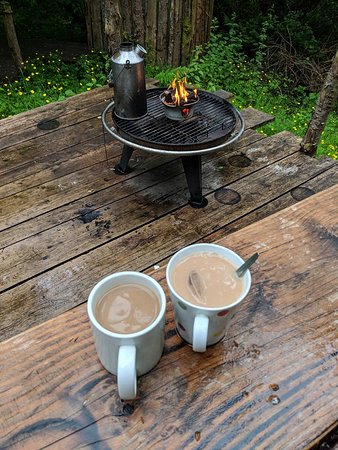
Finding another aquarium owner who lives close by and befriending them is always a great idea. You can always be there to help each other out amongst the many other great advantages it brings. They may still have power and are free to just come over while you are at work and drop in your battery air pump etc.
Train your family members on how to do the basics like installing the air pump, blanketing the tank, etc so they can help if you are absent.
If you are facing a possible prolonged power outage you may need to ask for help with things like stirring and jugging your water. Tag team one another if it’s going to be a long journey. Get everyone involved and aware of what you may need help with on the days leading up to the planned outage.
What To Do With Aquarium After a Power Outage?
You finally made it through and I hope you didn’t lose a single animal! But if you did, now is the time to SLOWLY bring your aquarium back to full health. I know you have heard that saltwater aquariums do not like rapid changes and this process will be no different.
Here are some things you will need to be aware of and depending on how long your tank went without power and how off your parameters are will dictate how much of this you should follow:
- Test all your water parameters to see where you are at and devise a plan to get them all back in line
- You will have had a bacteria die off so your aquarium may have a mini cycle
- Help increase bacteria by adding Dr Tims’s Live Nitrifying Bacteria or Prodibio Bio Digest (Amazon.com Links)
- Give your sand a good vacuum and your rocks a turkey basting to help remove detritus
- Do several small water changes over the next few days to help to slowly reduce the ammonia, nitrates and dead organisms
- Bring the temperature back up slowly. No more than 1 degree per day
- Cut down your lighting period and intensity and slowly raise back to full operating settings over week/10 days to prevent bleaching
- Unplug all your automatic dosers, feeders and ATO until you have your parameters plan in place
- Monitor your city water for sediment and junk after a big storm. Replace RO/DI filters as needed
- Slowly start feeding your fish. Do not overload what bacteria you have left
- Service your generator and clean and replenish all your supplies. Fuel/oil/batteries/filters etc
- Have your quarantine tank ready to go in case you need to remove and medicate a fish.
==>Read my Article on Simple Fish Quarantine Here<== - Don’t add any new fish or coral for a month. Let your bacteria regrow and stabilize

